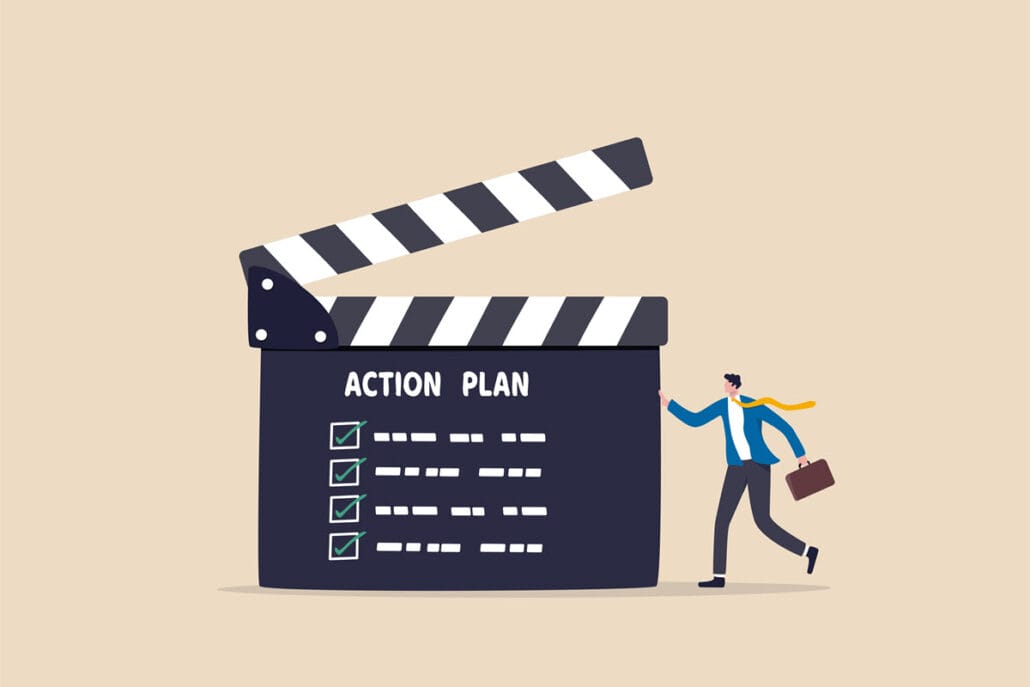Thinking about changing jobs? This guide covers everything from recognizing the need for change to researching potential new career paths and developing a solid action plan. Follow these steps to successfully transition to a new, fulfilling position.
Key Takeaways
- Recognizing the need for a job change is often the first step. Signals include job-induced stress, lack of fulfillment, and a negative impact on personal life.
- Conducting a self-assessment and identifying transferable skills are crucial steps to understand your strengths and values, which help in pinpointing suitable career paths.
- Developing a detailed action plan, networking, and financial planning are essential strategies to successfully navigate and ease the transition into a new career.
Recognizing the Need for a Job Change
The first step in any significant journey is recognizing the need for change. Feeling a lack of fulfillment and disconnection from your work is often the first sign that it might be time to reassess your career and change jobs. Have you ever found yourself dreading the start of the workday, feeling a wave of stress wash over you as you think about your job? This constant dread and job-induced stress are significant indicators that a new job path might be calling.
Moreover, when your job starts to negatively impact your personal life, it might be a clear sign that a job change is necessary. Perhaps you’ve noticed that your work environment doesn’t match your values, or worse, it’s become toxic, characterized by negativity, poor management, or even bullying. These are not just minor inconveniences but critical signals that it’s time to change jobs and look for new job opportunities that align better with your personal and professional goals.
A caveat in this first step is to take a good look at yourself to determine if it is indeed your job—and not something else going on in your life—that is causing you to dread your workday or feel overstressed. Be honest with yourself. Will you truly be in a better situation if you change careers, or will the same symptom return at any job because they’re caused by something else?
Your well-being depends heavily on your ability to discern when a career transition is necessary. If you find yourself daydreaming about a different career or feeling stuck with no advancement opportunities, it’s time to consider your next career move. Reflect on what you like and dislike about your current role to identify signs that it may be time to consider changing jobs. Developing such self-awareness paves the way for a more rewarding and satisfying career for career changers.
Self-Assessment: The First Step
Once you’ve recognized the need for a career transition, the next steps involve a thorough self-assessment. This vital phase aids in locating your strengths and values, steering you towards a satisfying career shift. Tools such as the Myers-Briggs Type Indicator (MBTI), CareerLeader, and the O*NET Interest Profiler can provide valuable insights into your skills and preferences.
Examining your values is equally important. Understanding what type of company culture complements your personality can help you avoid future job dissatisfaction. What working style is right for you? Are you looking for a collaborative environment, or do you thrive in a more structured and hierarchical setting? Perhaps you would be happier working in an outdoor job. Answering these questions can help you pinpoint what you’re looking for in your new job.
A readiness checklist can determine if you’re truly prepared for changing jobs. This self-assessment process not only clarifies your career goals but also boosts your confidence by highlighting your strengths. This forms the groundwork for cultivating your strategy for career transition.
Researching Potential Career Paths

With a clearer understanding of your strengths and values, it’s time to dive into researching potential career paths. Undertaking this step is vital to confirm that your impending career transition aligns with both your personal values and professional aspirations. Start by exploring various jobs and careers online, talking to people in those fields, and attending relevant conferences and seminars.
Informational Interviews
One of the most effective ways to gather industry-specific insights is through informational interviews. These are conversations with professionals in your field of interest, and can provide a wealth of knowledge about daily responsibilities, challenges, and job opportunities. To set up an informational interview, identify professionals via LinkedIn, industry events, or referrals from your network.
When you networking with a mindset of career research rather than job seeking, it can lead to valuable contacts and information. Such a proactive approach broadens your professional connections while also supplying you with the necessary knowledge to make educated decisions regarding your career transition.
Online Research about Different Career Paths
Do some online research about the careers you’re interested in. If you aspire to a higher level career, your research will reveal ways you can enter the field at a level that fits with your current education and experience. You can then gain more training, education, and experience to reach your ideal job.
Here are a few of the career spotlight fields covered in this blog alone that have mutliple levels, salaries, education requirements, and more:
- Jobs in engineering fields
- Careers working for charities
- Careers in nursing
- Transportation and logistics jobs
- Accounting jobs
- Digital marketing jobs
If it seems like it will take considerable time and education to reach your desired career, consider entering the field at a lower level to get your feet wet. For example, start as a technologist before becoming an engineer, as a nurse before becoming a nurse practitioner, or as an accountant before becoming an auditor. Most fields have plenty of room for growth, but it is very important to get into the field that interests you most to get started on your eventual goal.
Identifying Transferable Skills
Transferable skills, also known as portable skills, are the bedrock of a successful career change. These refer to the abilities, experiences, and knowledge that hold applicability across a variety of jobs and industries. Identifying and leveraging these skills can ease the transition into a new career and make you more marketable to employers.
Some examples of key transferable skills include:
- Critical thinking: evaluating, synthesizing, and analyzing information objectively to produce original insights
- Problem-solving: finding solutions to complex issues by identifying underlying reasons and executing a plan to resolve them
- Adaptability: the ability to quickly adjust to new situations and succeed in unfamiliar environments
These skills are particularly valuable in today’s ever-changing job market, especially when it comes to securing your current job and maintaining your current position.
To identify your transferable skills, consider listing your top skills and how you have used them in professional and personal contexts. This activity serves dual purposes – it underscores your strengths and primes you to present these skills to prospective employers if asked in an interview. Being confident about your skills and providing personal examples will enhance your appeal as a candidate in your new career field.
Bridging Skill Gaps
As you identify your transferable skills, you may also discover certain skill gaps that need to be addressed to succeed in your new career. Start by analyzing job descriptions and industry trends to identify the required skills. Prioritize these skills based on their relevance and importance to your career goals.
Exploring formal education, online courses, or professional certifications can help you acquire the necessary skills. An associate degree can go a long ways in landing a high-paying job. Webinars, workshops, and self-study through industry publications are also valuable learning activities. Remember, if a dream job requires a skill or competency that you currently lack, it may be necessary to obtain additional training or experience to bridge that gap.
Applying these new skills through projects, volunteering, or freelance work can provide practical experience and enhance your resume. Persisting with learning and actively seeking constructive feedback are indispensable for maintaining the relevance of your personal brand and showcasing your dedication to growth.
Developing an Action Plan

With a clear understanding of your strengths, transferable skills, and required competencies, it’s time to develop a detailed action plan. Define your career objectives and the skills needed to achieve them. Creating a career development plan involves setting clear short and long-term goals, including necessary education and training.
Setting manageable daily goals can help create a sense of accomplishment and control, reducing stress. Regularly evaluate your progress and adjust your plan as needed to stay on track. Possessing a comprehensive action plan is imperative to bolster your chances of success in your career transition.
After identifying your new career path, developing a specific action plan will guide you through each step, ensuring that you remain focused and motivated throughout the transition.
Networking in a New Industry
Networking serves as a potent tool for those contemplating a career change. It can lead to valuable connections, job leads, and insider information on vacancies and industry culture. Start by attending industry events, workshops, and seminars to expand your professional network. Building genuine relationships through active listening and follow-ups is key to effective networking.
Some proactive ways to gather insider information and establish connections in your new field are:
- Informational interviews
- Volunteering
- Engaging with others online, such as commenting on posts and joining discussions
- Joining industry-specific online groups and forums
These activities can increase your visibility and help build a professional network, while also providing valuable insights.
Networking with professionals in your new field not only helps establish your new professional image but also opens doors to job opportunities and valuable advice.
Financial Planning for Career Change
A key component of preparation for a career transition involves financial planning. Start by tracking your monthly expenses and creating a detailed budget. Building an emergency fund with at least 3-6 months of expenses is recommended to provide financial security during the transition.
Paying down debt can free up finances for your career change, and simulating living on the anticipated new salary can help you adjust to the financial change. It’s important to consider the potential financial challenges of changing careers, such as starting at a lower salary or losing benefits.
Finding a side job can help build financial reserves, especially for those with lower income, and ensuring health coverage during the transition period is essential. Avoiding cashing out retirement savings due to penalties and taxes is also advisable.
By planning for the financial changes that will take place while changing careers, you allow yourself the peace of mind of financial security, reducing stress and easing the burden of money problems.
Rebranding Yourself Professionally
Professional rebranding entails the creation of a personal brand that mirrors your distinct strengths, experiences, and objectives for your upcoming career. Start by updating your resume and LinkedIn profile to reflect the career change. Ensure your digital presence includes a recent professional photo, a compelling bio, and a summary of your skills.
Aligning your personal brand with your career goals involves:
- Defining your goals
- Tailoring your brand to reflect the necessary attributes and skills
- Creating a compelling personal narrative by reflecting on key milestones, challenges, successes, and lessons learned in your professional journey
This can make your brand more relatable and authentic.
Showcasing completed projects and achievements in line with your new career can solidify your rebrand. Blogging and content creation allow you to demonstrate expertise, share insights, and engage with a wider audience, enhancing your personal brand. Remember, authenticity is key to an effective personal brand.
Navigating the Job Market

Effective navigation of the job market calls for a strategic approach. Creating a job search system helps organize job-related information such as contacts, resumes, and networking notes in one place. Setting realistic goals like applying to three to five jobs per week and connecting with at least two people daily can streamline the one job search process.
Tailoring your resume and cover letter to each job application is crucial for standing out to recruiters. Maintaining a professional online presence, especially on LinkedIn, is essential for job searching effectively. Utilizing job search platforms like LinkedIn, Indeed, and Glassdoor can aid in discovering job opportunities and setting up alerts for relevant positions.
Preparing examples that showcase your skills and accomplishments is key for acing job interviews. When preparing for an informational interview, research the person and their company, prepare thoughtful questions, and dress professionally.
Easing the Transition
A strong support system and being mentally and physically healthy can help smooth the transition into a new career.
Cultivating a robust support network of friends, family, and colleagues is imperative to improve overall health and stress management during this period. Maintaining a connection with family and friends can help you work through a tough challenge or celebrate a new opportunity.
Adhering to a healthy lifestyle, including eating right, exercising, and getting adequate rest, can help increase tolerance to stress and reduce sick days. This is especially important during the first few weeks at a new job.
If possible, transitioning gradually while preserving your current employment can reduce stress and help with maintaining positive professional relationships with both employers. It can also alleviate money concerns and provide financial stability during this time.
If the stress of changing jobs does get to be too overwhelming, seeking help from a mental health professional when persistently overwhelmed can be crucial for health and happiness.
Lastly, trying out your chosen career by volunteering, shadowing a mentor, or discussing opportunities with recruiters can help ease the transition.
Summary
A successful career transition involves recognizing the need for change, conducting a thorough self-assessment, researching potential career paths, identifying skill gaps, developing an action plan, and networking effectively.
You may need to consider obtaining additional training or experience to meet the necessary qualifications for your dream job. Look into formal education, online courses, or professional certifications to bridge the skill gap.
Financial planning and rebranding yourself professionally are also critical steps in this journey. Track your expenses, create a budget, and prepare for potential financial challenges if you start at a lower salary.
Remember, easing the transition with a support network and maintaining a healthy lifestyle can significantly impact your success. Embrace this journey with confidence, and you’ll find yourself thriving in a career that truly aligns with your goals and values.


